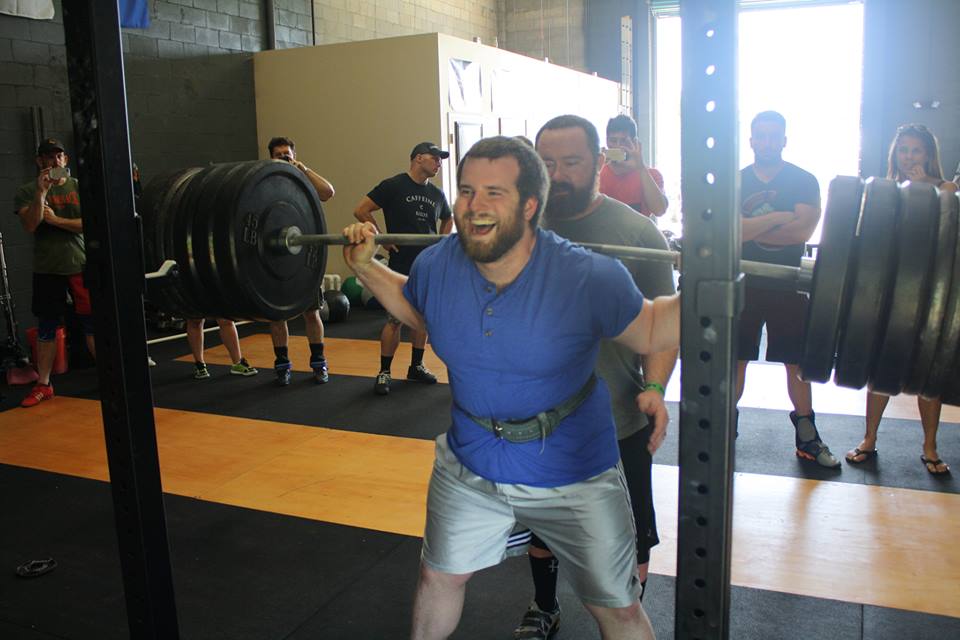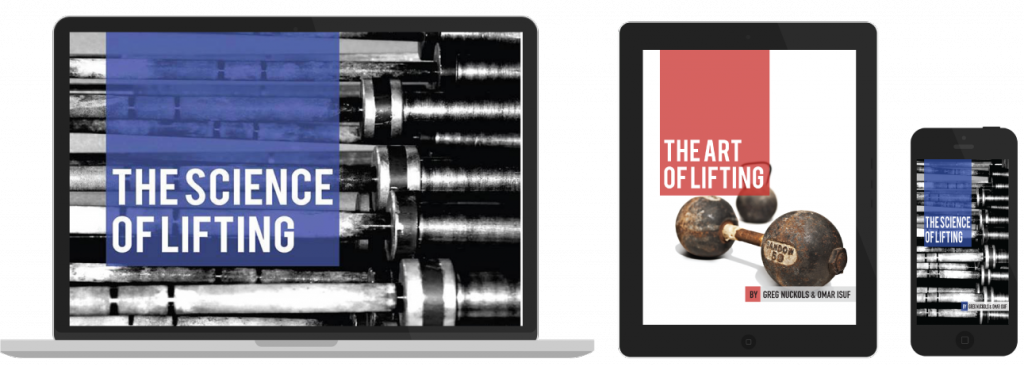The Long View of Training
Today’s guest post is from Greg Nuckols, an emerging strength coach for whom I have a world of respect.
I intend to still be picking up heavy things 40 years from now. I assume that’s also your intention.
That intent should change how you look at the training process.
We live in a society that loves speed, and speed works well as a marketing tool in the fitness industry. If I promise you that I can make you look like the guy or gal on the cover of the magazines after 5 years (which may be feasible if you picked the right parents for it. And just to be clear, I don’t promise that – this is purely for illustrative purposes.), and someone else promises you the same thing, but says they can do it in 8 weeks, you’ll probably go with the other person 9 times out of 10 if you don’t know any better. And a lot of the fitness industry banks on you not knowing any better.
We want what we want, and we want it yesterday.
Once you’ve been around the block a few times, it’s easy to see right through the obvious huckster in the example above. But I still think that line of thinking influences how we make a lot of training decisions, whether we realize it or not.
Nothing feels better in the gym than a shiny new PR. New 1rms are the best, but lifting 5 or 10 pounds more for a 5rm or 10rm, or taking your old 5rm and hitting it for 6 reps also feels pretty sweet. But I think too often we get tunnel vision, and pursue that tangible, quantifiable progress in the short run to our own detriment: Always chasing new PRs is the serious lifter’s form of instant gratification.
When you step back and look at training with the perspective of, “I’ll still be doing this in 40 years,” things look a little bit different.
In the long run, there are two basic factors that determine how strong you can be: the amount of muscle you’re carrying on your frame, and generally how healthy your muscles, joints, and connective tissues are. If you have those two things in place, “strength” is just a matter of learning movement patterns, which can happen fairly quickly.
The first factor – how much muscle you’re carrying – is incredibly straightforward. Just train hard most of the time, eat well most of the time, and sleep well most of the time. There’s plenty of evidence showing that you can gain muscle mass training in basically any intensity range, and when taking the long view, questions like “what’s the optimal loading scheme” don’t really matter anyways, because those address the short term concern of “how soon will I get my gains.” Put the appropriate effort into your training, and the progress WILL come.
The second factor – the overall health of your musculoskeletal system – is something Dean could tell you about better than I could. But what works astoundingly well is using these four simple rules:
- Don’t do anything that hurts.
- If something starts hurting that didn’t hurt before, seek professional help before it goes from being a small nuisance to a long-term headache.
- Don’t attempt a weight or a rep you’re not 99.9% sure you can complete with good form.
- When learning a new exercise, always be one workout “behind” where you think you could be in terms of load and volume for at least the first month.
One final thing worth mentioning: With a long view of training, you have an easier time knowing when to push yourself and when to pull back. At this point in my training life, the only thing I use to “periodize” my training is work stress and sleep quantity/quality. High stress, poor sleep means maintenance-mode training – low volume and intensity, with just enough training stress to keep myself from regressing.
Either high stress or poor sleep means conservative training aimed at minimizing injury risk, but still making slow progress – this would usually mean heavier work for the squat, bench, and deadlift, and quite low volume for those heavier lifts, but quite a bit of accessory work. Low stress and good sleep throws the playbook wide open, and I know I can be a little more aggressive with my training. Since I’m not trying to force progress on a specific timeline, it doesn’t bother me to stay in maintenance/conservative mode for months at a time. After all, 40 years from now, slower (or no) progress during those times beats risking an injury due to fatigue/lack of focus that could become a chronic weak point.
Training with a deadline adds stress to the training process that’s unnecessary unless you’re preparing for a competition of some sort. Otherwise, embrace the long view. Put in the work to grow, and then it’s easy to ramp up weight for a few weeks to perfect the specific skills you want to master. But that strength is based on the foundation of muscle size, which can be built in the long run with just about any training style, given sufficient volume and effort. Minimize risk, and don’t make dumb decisions in the pursuit of constant PRs when your life isn’t providing you with the right conditions for growth; slow progress or stalling beats a prolonged setback due to injury.
Train with the 40-year view, not the 4-week view. You’ll get where you want to go, and probably enjoy the process of getting there even more.
About Greg Nuckols
Greg is the chief content manager for Juggernaut Training Systems, one of the biggest strength training websites in the world, and also the head honcho of Strengtheory.com, a site dedicated to all aspects of moving more weight. In addition to being a very well educated and exceptional writer, he’s also an elite level powerlifter, with best lifts including 755 pound squat, 475 pound bench and 725 deadlift (over 1900 pound total) and holds 3 all-time world records.
He’s recently released a combo product of 2 books, The Art and Science of Lifting. The Art is the aspect for people who don’t have advanced knowledge of biomechanics and training theory and just want to get the nuts and bolts of how and why to lift, whereas the Science is for the more hardcore science geeks to check out, which I guarantee will change your mindset on at least a few things, even if you have advanced degrees.
In addition to the books, you get a couple of very sweet tracking bonuses:
- A diet guide to automatically track your macronutrients and ensure you’re hitting recommended targets
- A PR tracker to track your workouts and determine when your next personal best will be, and even by how much.
- “Slavic Swole” program to apply higher intensity and higher frequency training principles to get big quick.
Until Sunday evening, the entire package is only $39, which makes it a massive deal for anyone curious about how we go from lifting weights today to lifting bigger weights tomorrow, and how to take advantage of the body of scientific knowledge on the subject without getting lost in the deafening amount of misinformation spread around the internet.
As a side note, this is a product that does not provide affiliate income from sales, so if you buy a copy I don’t get a dime. I just believe in Greg enough to be willing to promote his content without a question, and as a result I know you’ll get a lot out of it. I get asked to promote products all the time, and turn down probably 4 out of every 5 that are sent to me. This is a great resource that I will happily promote, and I know you’ll love it too.



4 Responses to The Long View of Training